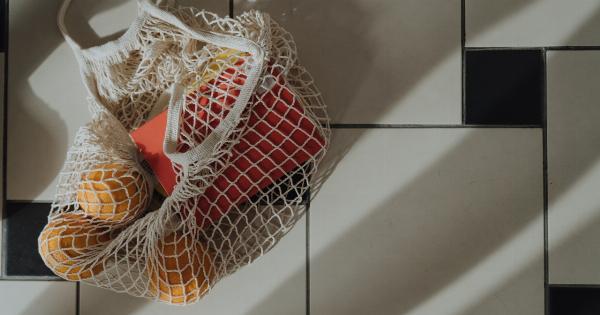Hair loss is a common problem that affects both men and women. It can be caused by various factors such as genetics, hormonal changes, stress, and poor hair care practices.
While it may seem like a daunting issue to tackle, there are three essential steps that can help combat hair loss effectively. In this article, we will explore these secrets to tackling hair loss and provide you with actionable tips to regain healthy and voluminous hair.
Step 1: Identify the Underlying Cause
The first and most crucial step in combating hair loss is identifying the underlying cause. This can be done by consulting with a dermatologist or a trichologist who specializes in hair and scalp health.
They will examine your scalp, review your medical history, and may even conduct blood tests to pinpoint the exact cause of your hair loss. Some common causes of hair loss include:.
- Genetics: If hair loss runs in your family, you may be prone to hereditary hair loss, also known as androgenetic alopecia.
- Hormonal changes: Imbalances in hormones, such as in conditions like polycystic ovary syndrome (PCOS), can contribute to hair loss.
- Stress: Extended periods of stress can disrupt the hair growth cycle and lead to hair loss.
- Poor hair care practices: Excessive heat styling, chemical treatments, tight hairstyles, and aggressive brushing can damage the hair follicles and cause hair loss.
Step 2: Adopt a Healthy Hair Care Routine
Once the underlying cause of your hair loss is identified, the next step is to adopt a healthy hair care routine. This routine should aim to nourish and strengthen your hair follicles, promote proper scalp health, and minimize damage to your hair.
Follow these tips to establish a hair care routine that can effectively combat hair loss:.
1. Choose Gentle Hair Products
Opt for hair products that are gentle, sulfate-free, and made with natural ingredients. Harsh chemicals can strip away the natural oils from your scalp, leading to dryness and hair loss.
Look for products that promote hydration and provide nourishment to your hair follicles.
2. Maintain a Balanced Diet
Eating a nutritious and well-balanced diet is crucial for healthy hair growth. Include foods rich in vitamins, minerals, and proteins such as leafy greens, eggs, fish, nuts, and seeds.
Additionally, consider taking supplements like biotin, zinc, and vitamin D, as they can support hair health.
3. Avoid Heat Styling and Chemical Treatments
Excessive heat styling tools like curling irons, straighteners, and hair dryers can cause significant damage to your hair. Limit the use of these tools or use them on the lowest heat setting.
Similarly, avoid harsh chemical treatments such as bleaching, perming, or relaxing, as they can weaken the hair shaft and lead to breakage.
4. Be Gentle with Wet Hair
Your hair is most vulnerable to breakage when it’s wet. Avoid vigorous towel drying and combing through wet hair. Instead, gently pat your hair dry with a microfiber towel and use a wide-toothed comb to detangle any knots.
5. Massage Your Scalp
Regular scalp massages can stimulate blood flow to the hair follicles, promoting hair growth. Use your fingertips to gently massage your scalp in circular motions for a few minutes each day.
You can also use essential oils like rosemary, lavender, or peppermint oil to enhance the massage.
Step 3: Explore Effective Hair Loss Treatments
In addition to maintaining a healthy hair care routine, there are several effective hair loss treatments that you can explore to stimulate hair growth and prevent further hair loss.
These treatments may vary depending on the underlying cause and severity of your hair loss. Some common treatments include:.
1. Medications
There are medications available, such as minoxidil and finasteride, that can help slow down hair loss and promote regrowth.
These medications work by either stimulating hair follicles or blocking the production of certain hormones that contribute to hair loss. However, they should only be used under the guidance of a healthcare professional.
2. Laser Therapy
Low-level laser therapy (LLLT) devices emit red light that stimulates hair follicles and promotes hair growth.
These devices can be used at home or in specialized clinics and may be helpful in treating androgenetic alopecia and other hair loss conditions.
3. Platelet-Rich Plasma (PRP) Therapy
PRP therapy involves injecting concentrated platelets from your own blood into the scalp. These platelets contain growth factors that can stimulate hair follicles and promote hair regrowth.
PRP therapy is a non-invasive procedure that has shown promising results for various types of hair loss.
4. Hair Transplantation
In cases of severe hair loss, hair transplantation may be a viable option. During this procedure, hair follicles from other parts of your body or a donor are transplanted to the balding areas.
Hair transplantation can provide long-lasting and natural-looking results, but it should always be performed by a qualified professional.
Conclusion
Tackling hair loss is a journey that requires patience, consistency, and the right approach.
By identifying the underlying cause, adopting a healthy hair care routine, and exploring effective hair loss treatments, you can take significant steps towards regaining healthy and luscious locks. Remember, everyone’s hair loss journey is unique, so it’s essential to consult with a healthcare professional who can provide personalized guidance and recommendations for your specific needs.


























